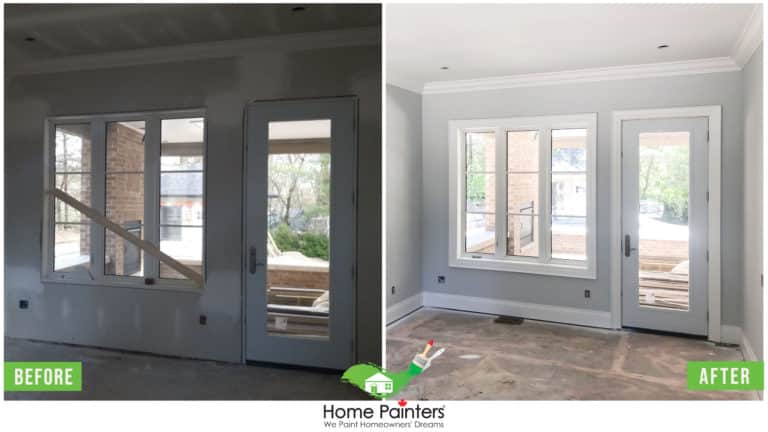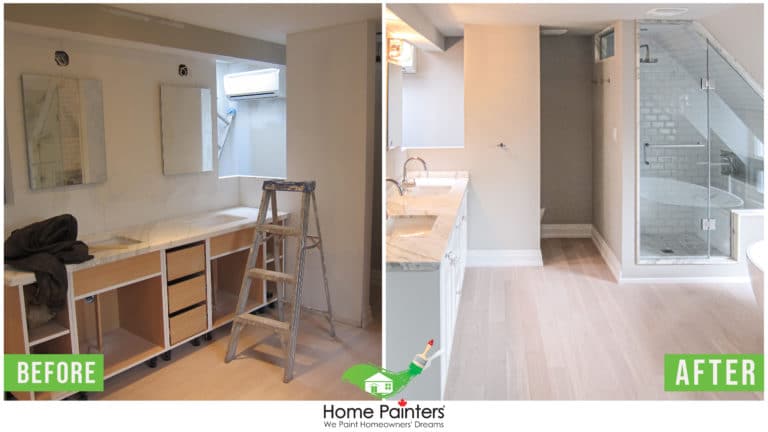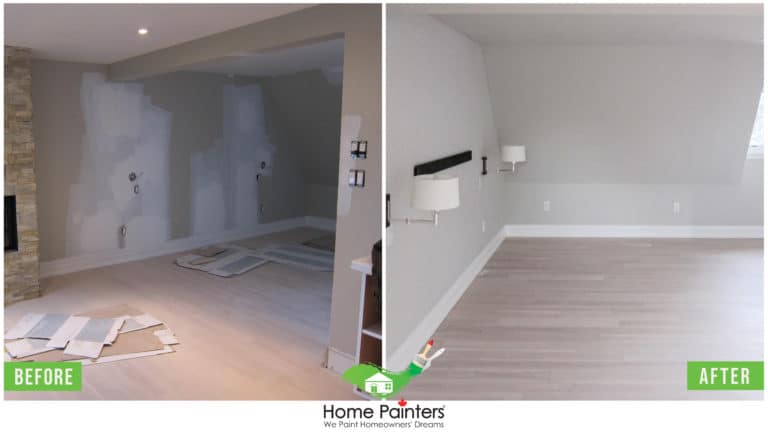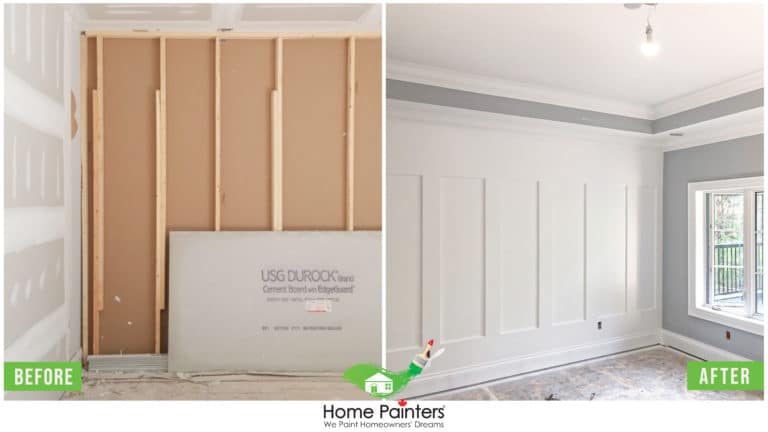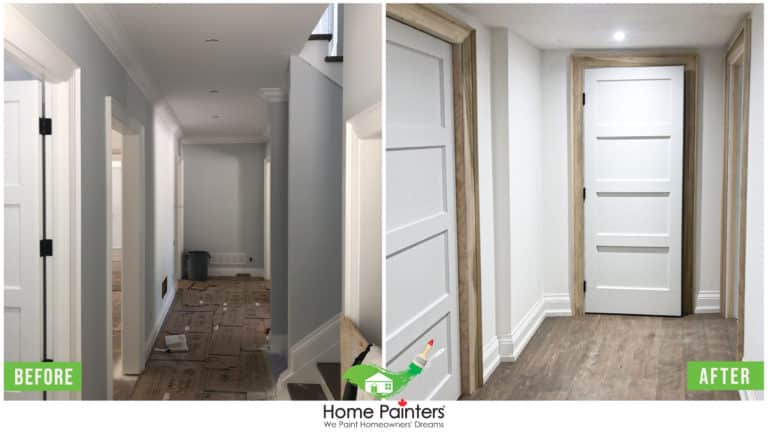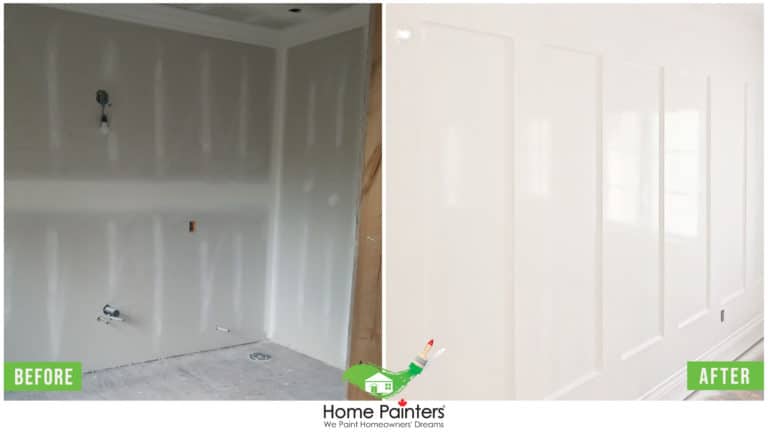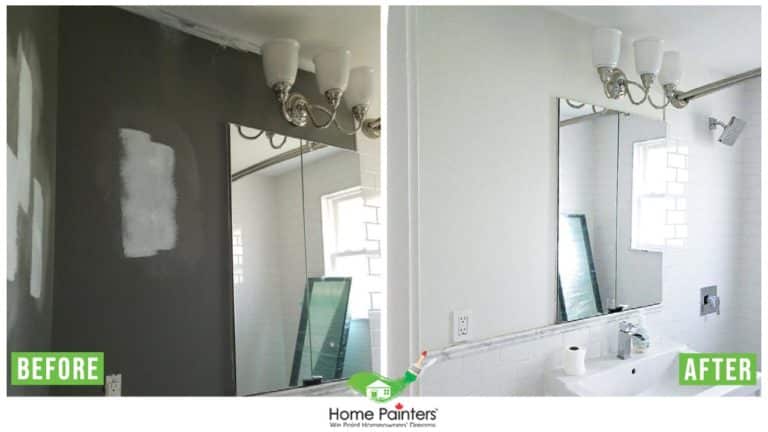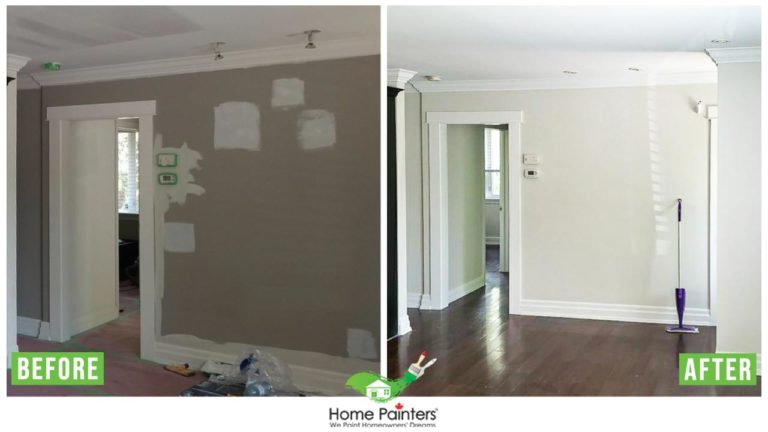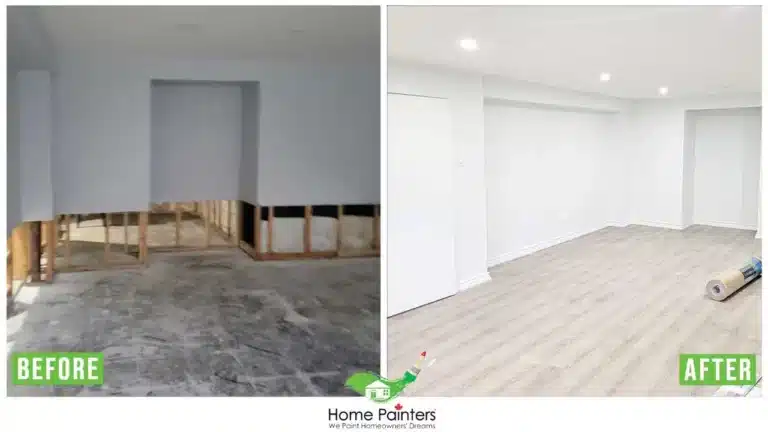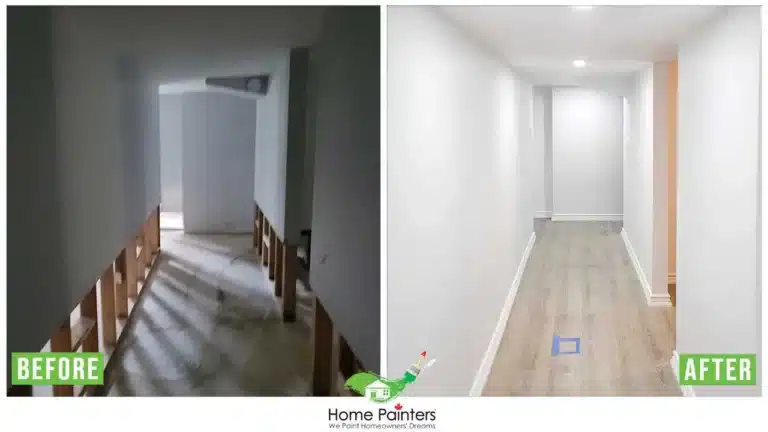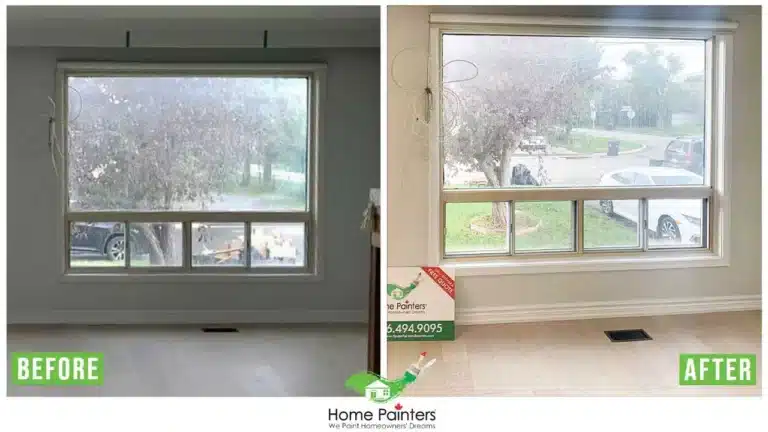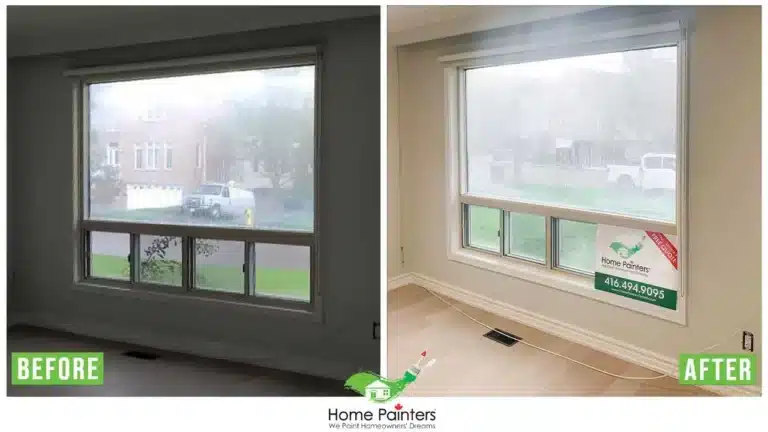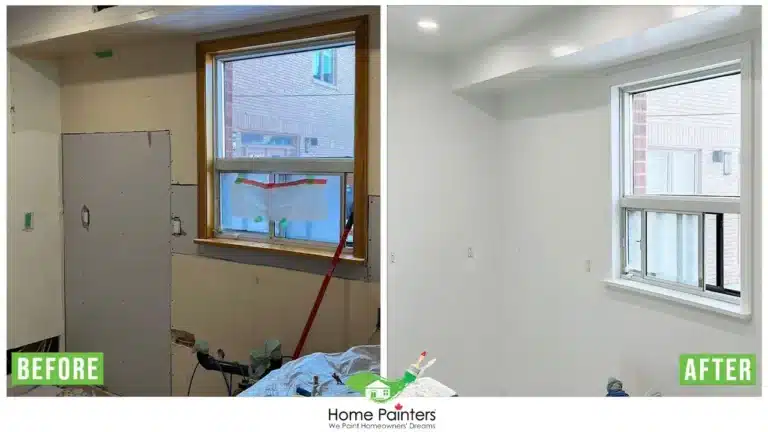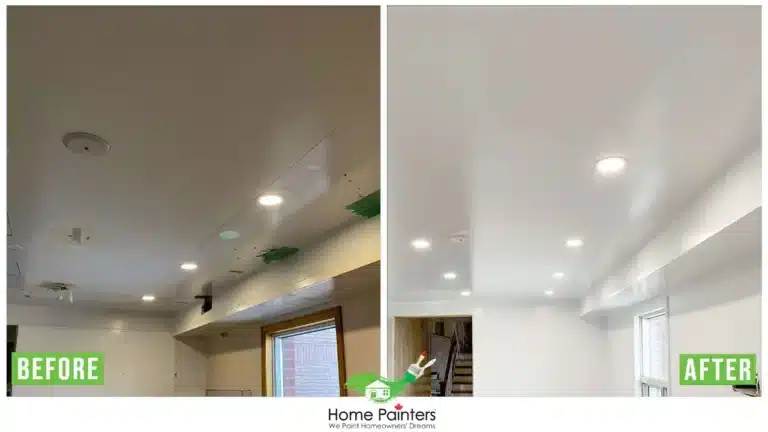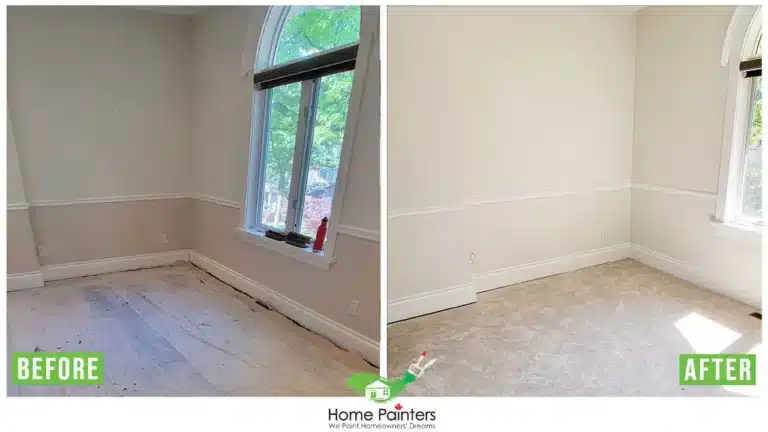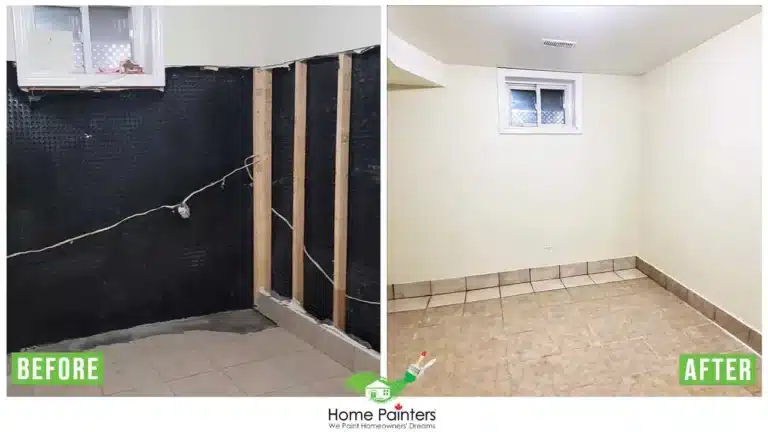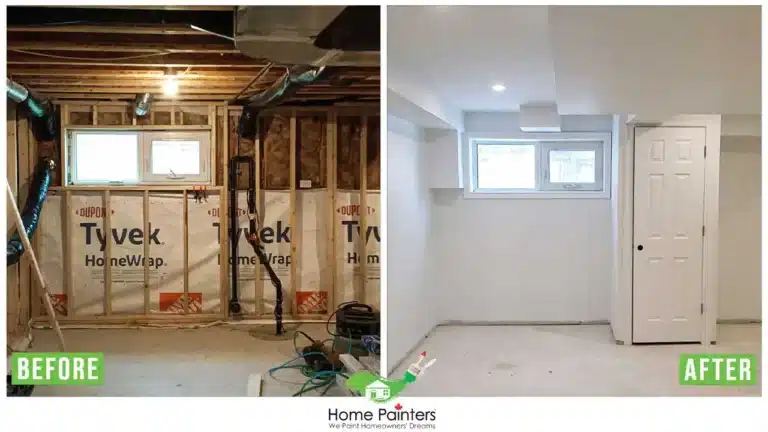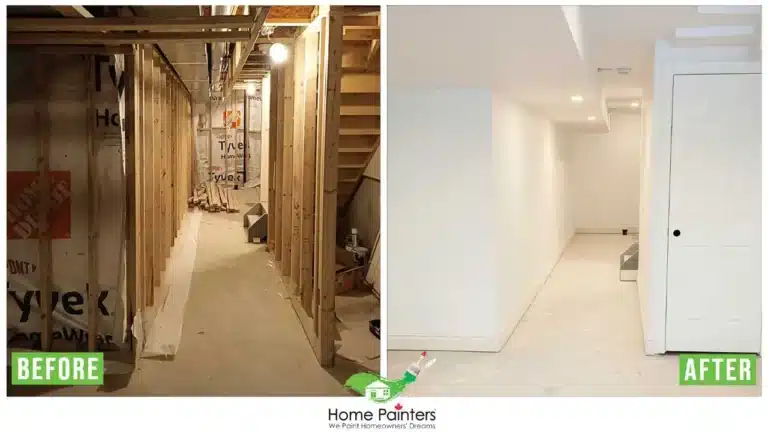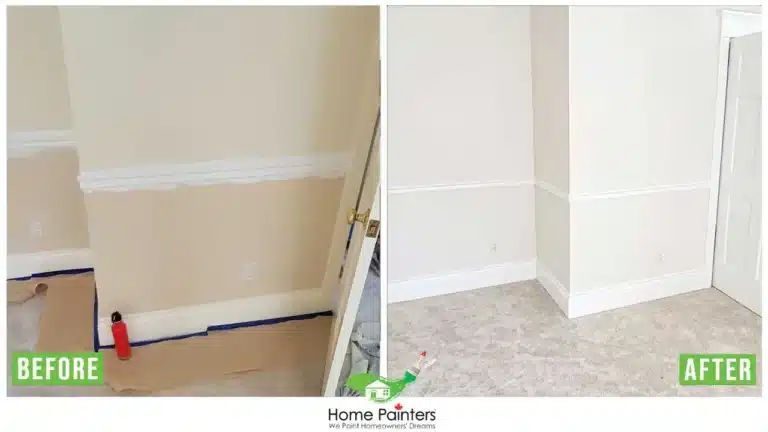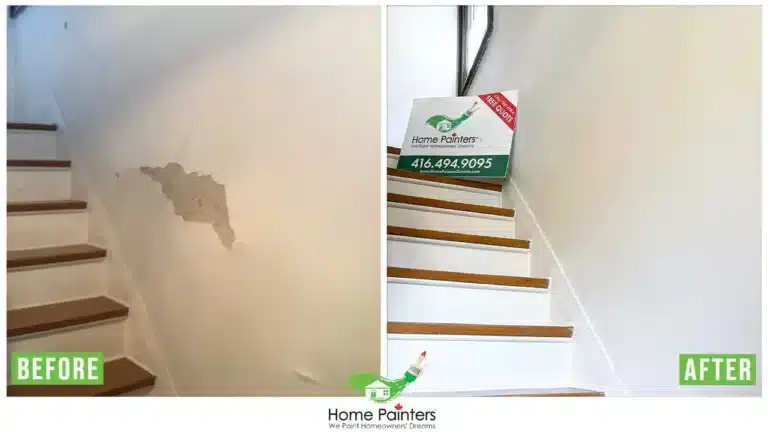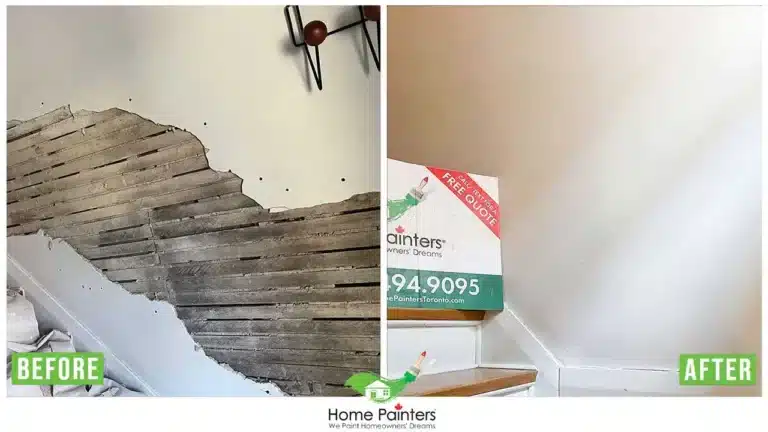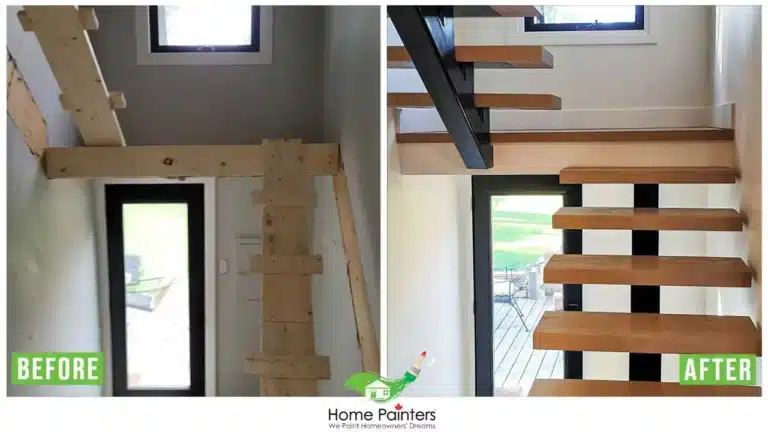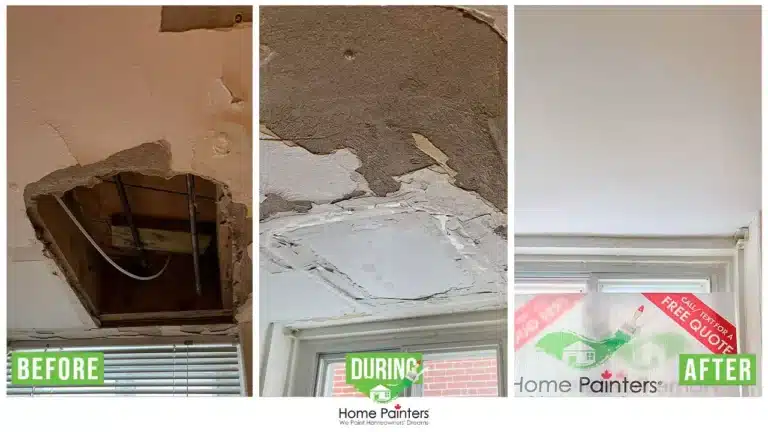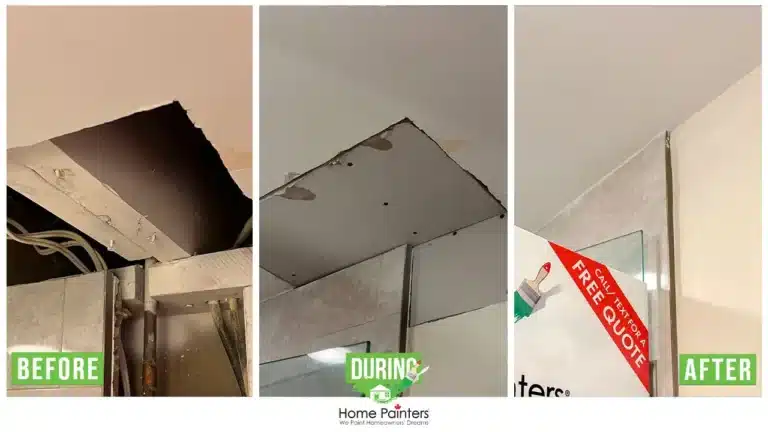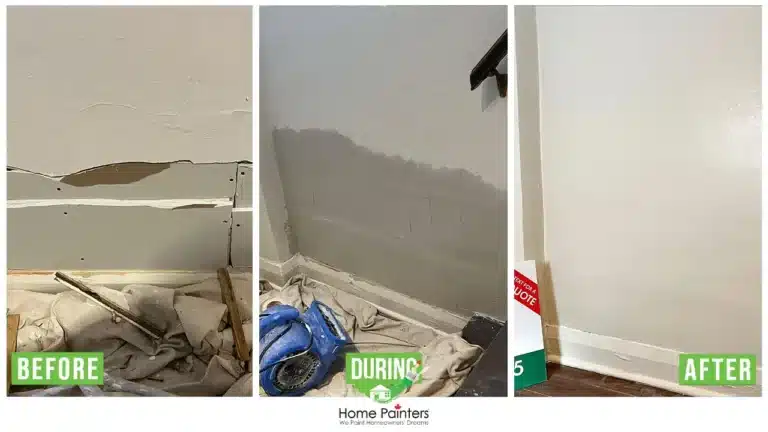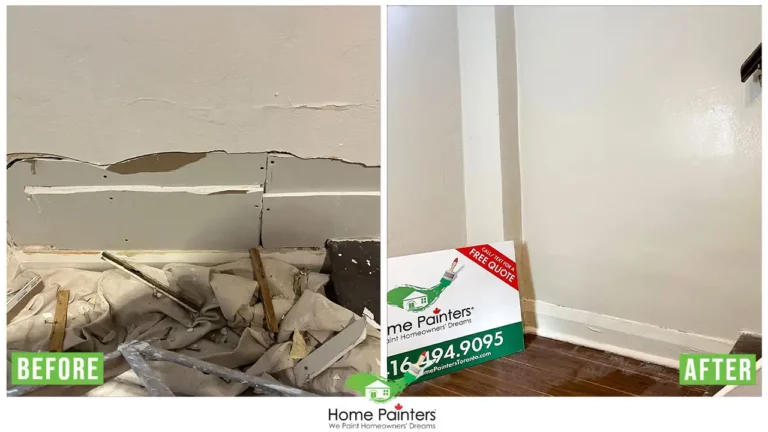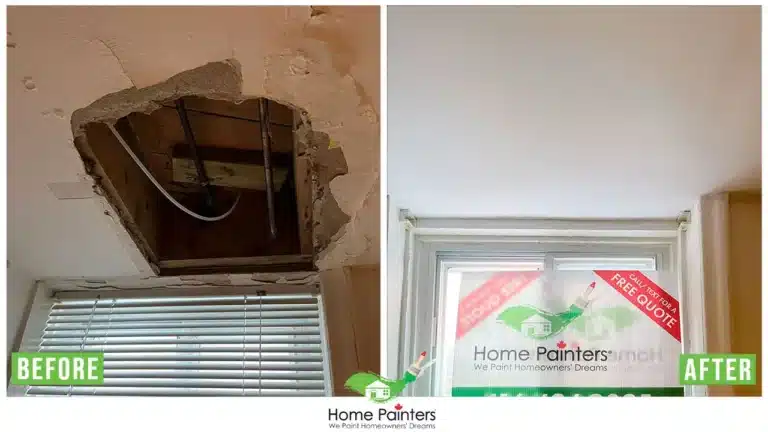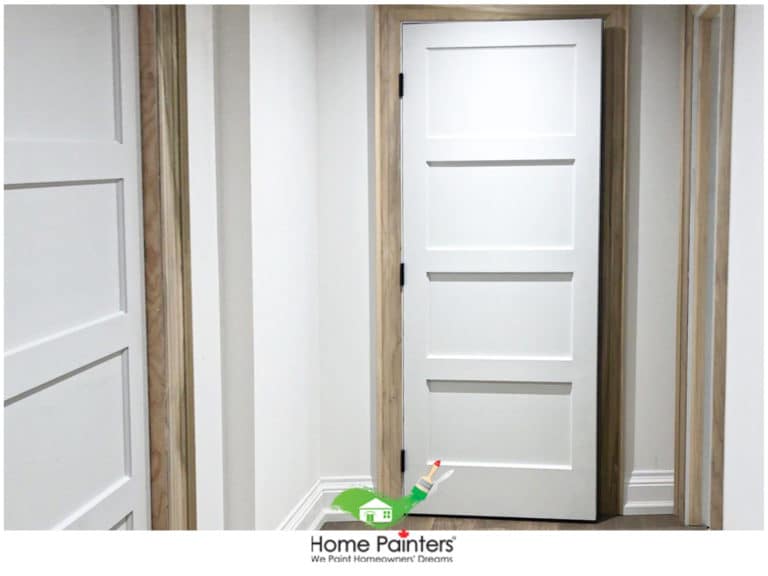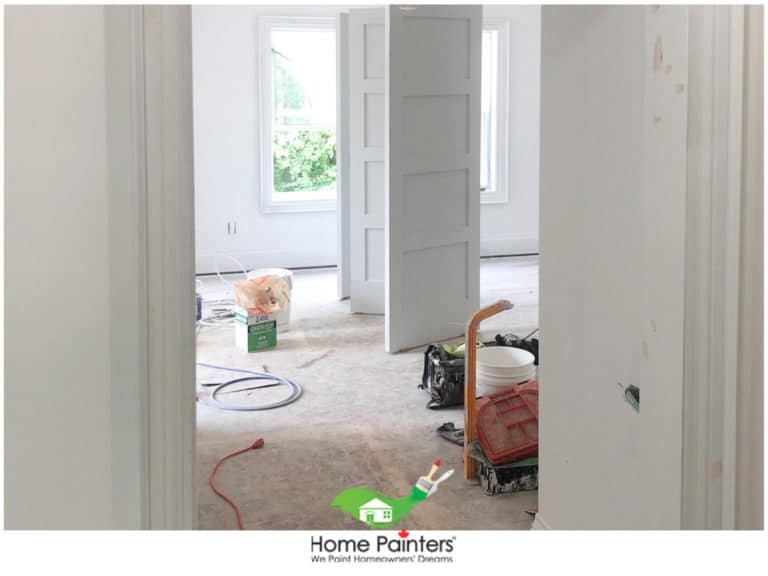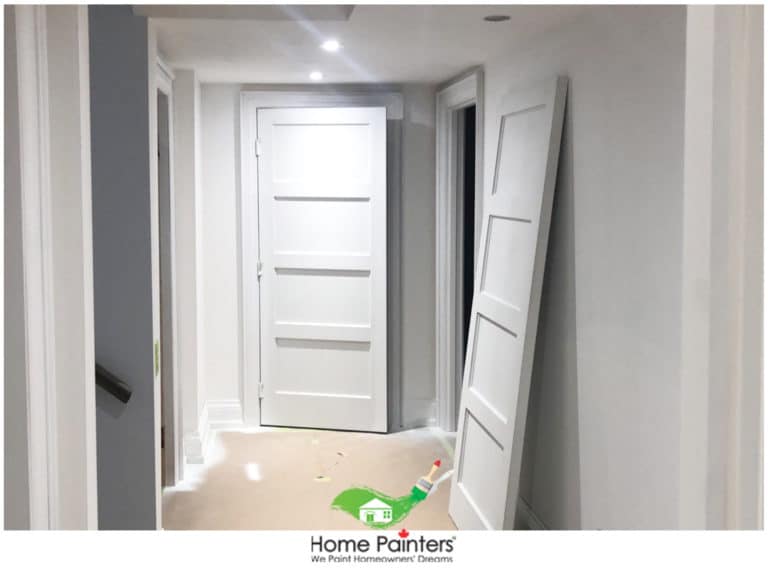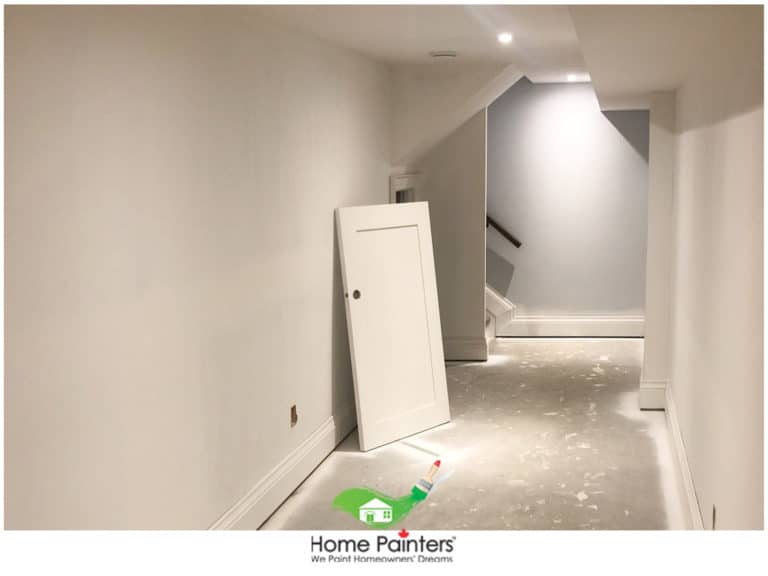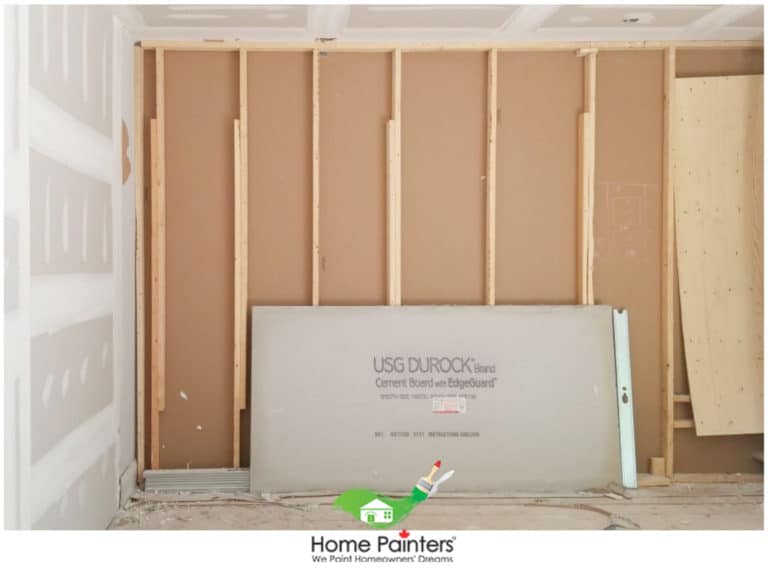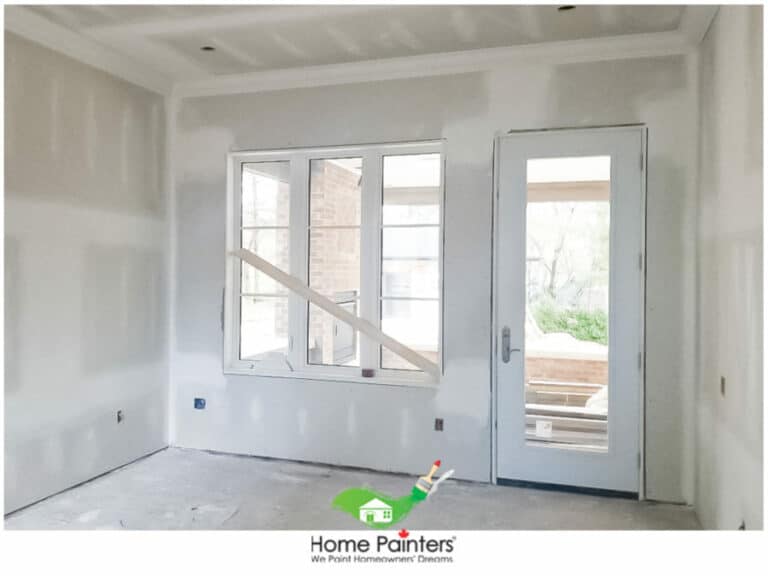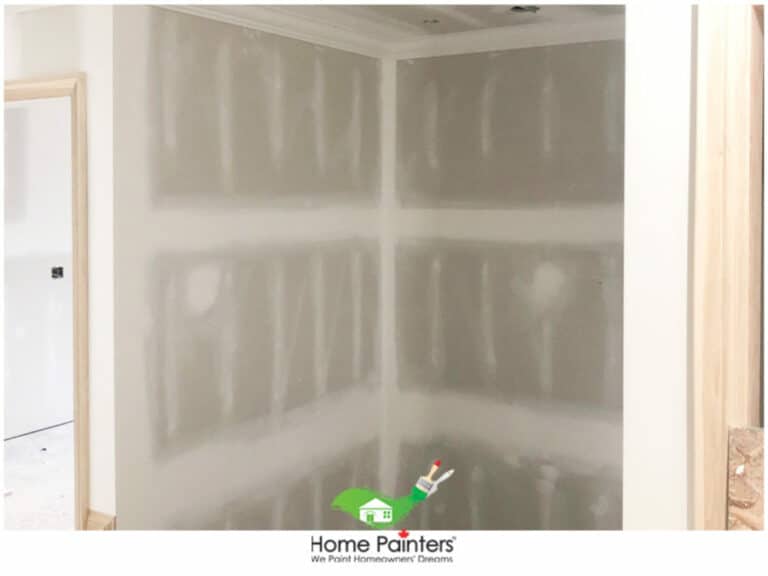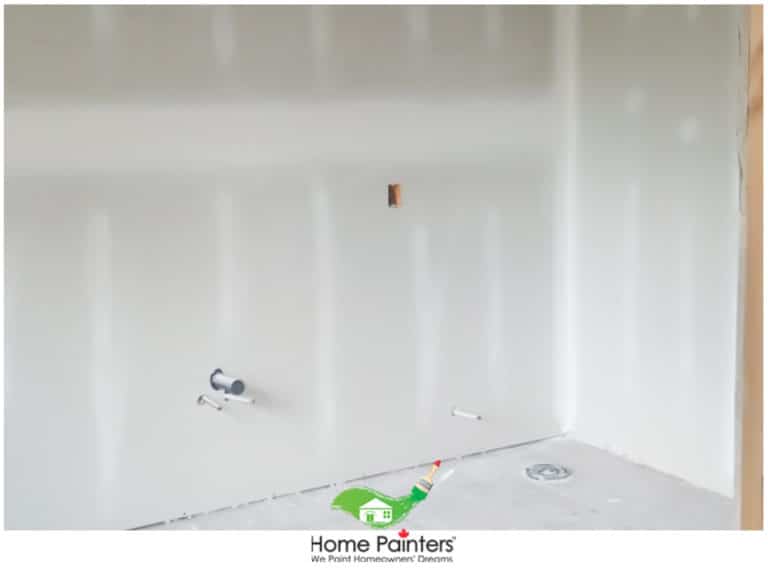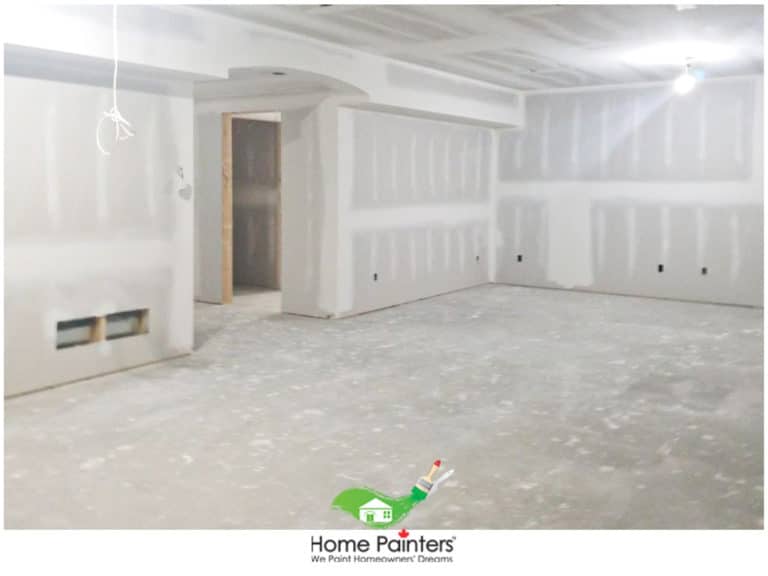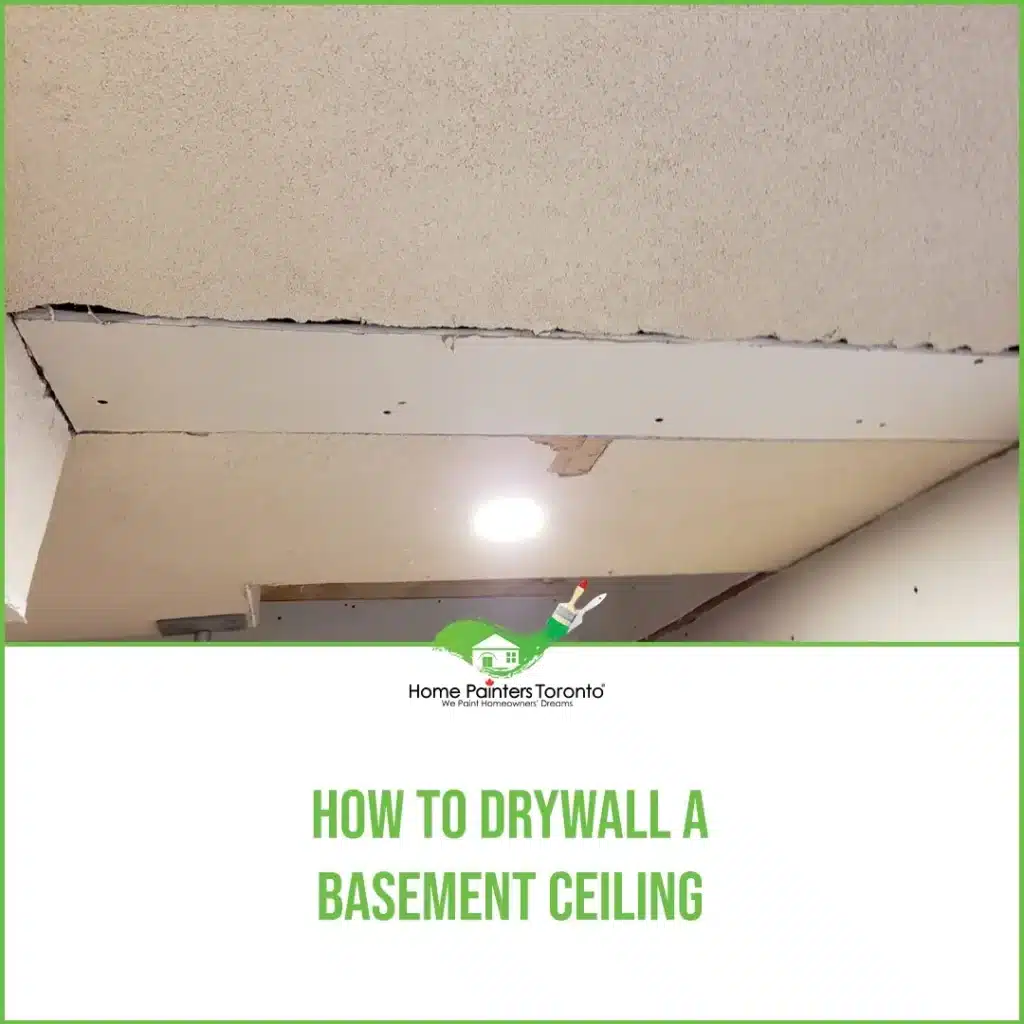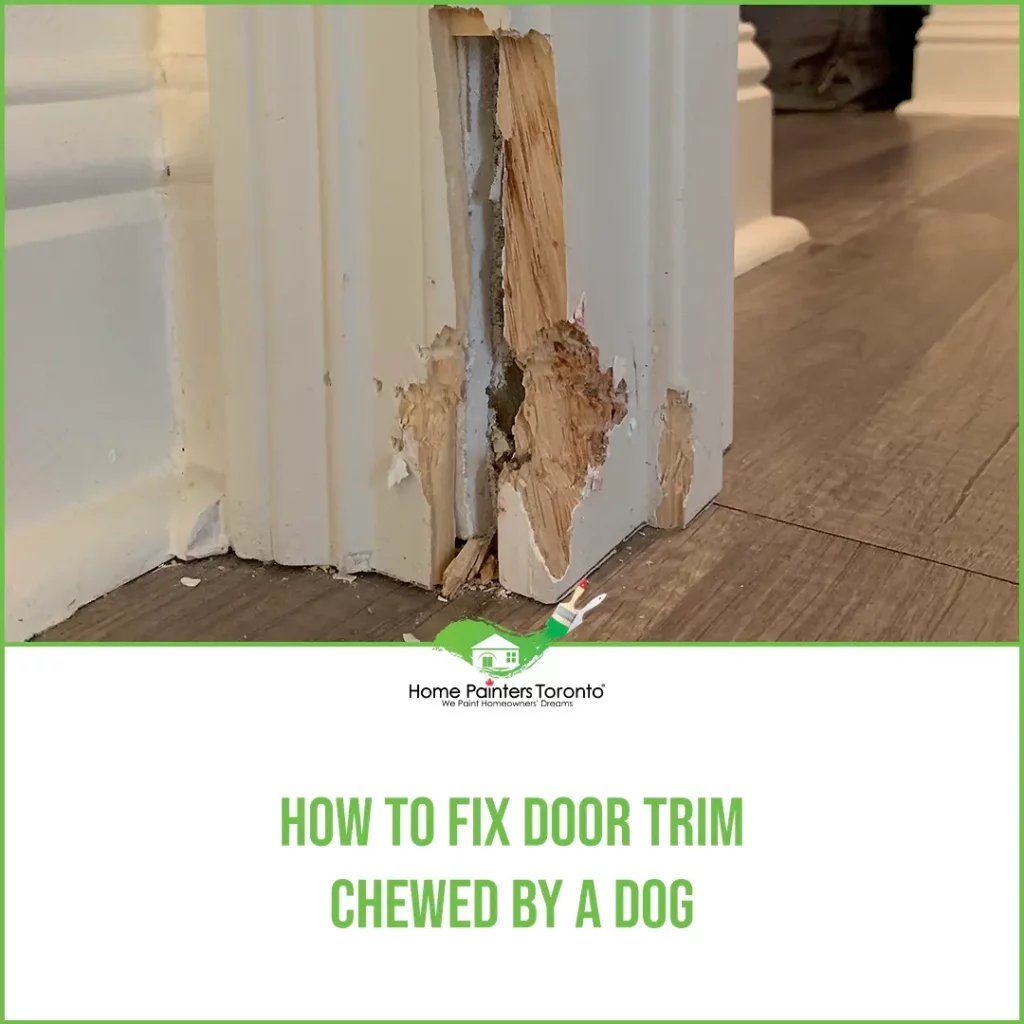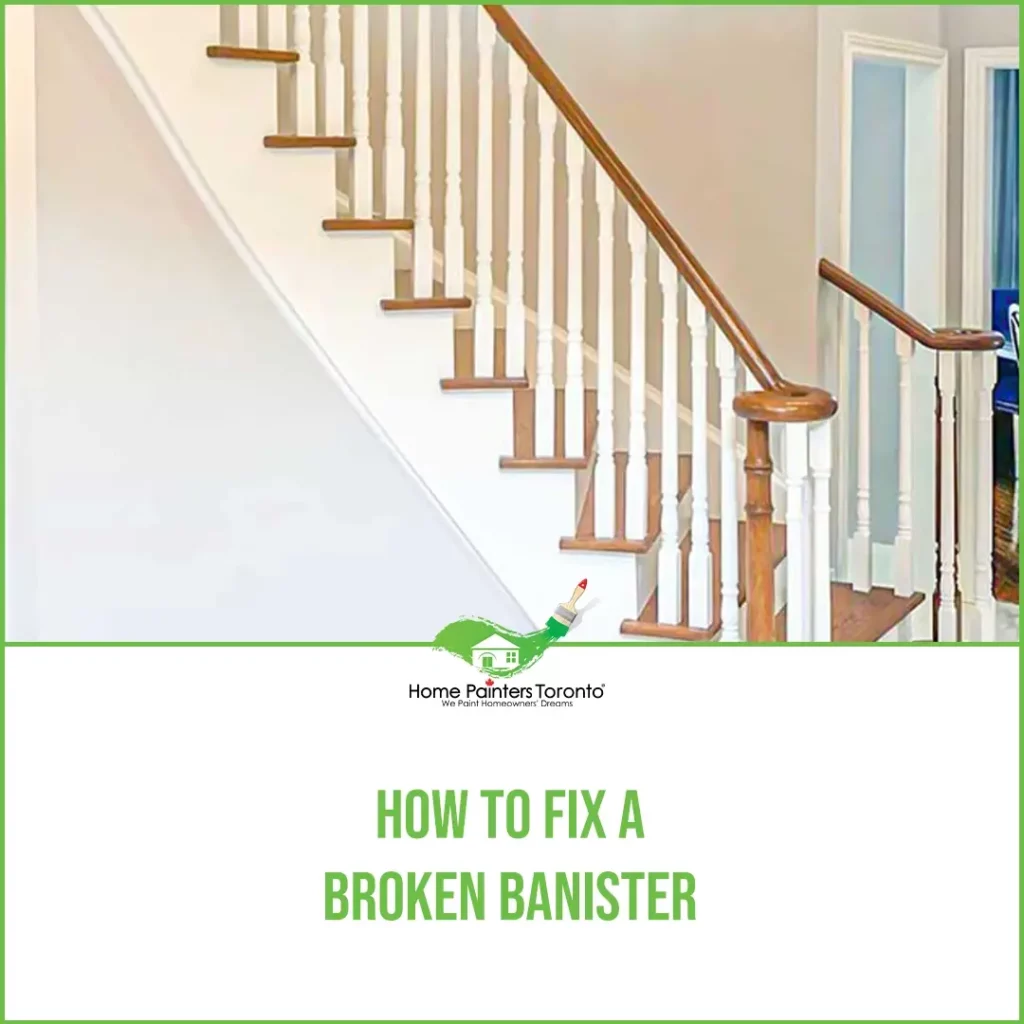
Have you been noticing scuffs and holes in the drywall in your house? Wondering how they got there? There are a number of ways drywall can get damaged, some of which you should know about before moving that extra-large couch upstairs! Whether it’s water damage or damage from previous renovations, we’ve compiled 10 of the most common reasons for drywall damage. Read on to find out what they are, how you can avoid them, and how to do drywall repair.
1. Popping Nails
• Occasionally, if nails are not securely set in the centre of the joist or stud, over time a nail may pop through the drywall. Don’t reach for the hammer and try to nail it back, as you can do further drywall damage and the nail could eventually come out again.
• For drywall repair, simply remove the nail and find where the stud is, then nail it through at a slightly different point so you know it’s properly and securely fastened.
2. Furniture Scuffs
• Scuff marks from furniture are another form of drywall damage you may find, even before you move into your home. They’re typically more minor, and have the appearance of a pencil or marker stain.
• Avoid scuffs by carefully moving items around in your house and not placing bigger furniture too close to the wall.
For drywall repair, if the damage hasn’t actually ripped off pieces of drywall, the problem can be solved with an easy-to-find cleaning sponge.
3. Smaller Holes
• Small holes can be caused by a number of things, like a door that swings open too hard. You can avoid this drywall damage from happening again by buying an adhesive backing plate for the wall. Just line it up with the doorknob or corner of the door, and you’ll protect the wall from future drywall damage.
• If you need to do drywall repair for a small hole, you can use a joint compound and patch over it. Use drywall tape to cover the hole and press it into the compound. Smooth, let dry, and sand it clean the following day. You’ll need to paint it the same colour as the wall so there is no trace of damage left behind.
4. Bigger Holes
• If you suspect there is water damage caused by a broken water line, then you have some repairs to get to quickly! Once you have fixed the water line, making that your first priority, the next step is fixing the damaged drywall. This particular situation is not always avoidable, but you can decrease the chances of it happening again by ensuring that the plumbing in your home is working well.
• Repairing drywall damage from water is necessary not only because it looks terrible but also because the drywall will not hold up due to it being weakened and can even be dangerous to your health. Remove the drywall immediately so that it doesn’t start to grow mould. Replace the drywall and be sure that it has countersunk 1/16th of an inch.
5. Water Damage
• Small holes can be caused by a number of things, like a door that swings open too hard. You can avoid this drywall damage from happening again by buying an adhesive backing plate for the wall. Just line it up with the doorknob or corner of the door, and you’ll protect the wall from future drywall damage.
• If you need to do drywall repair for a small hole, you can use a joint compound and patch over it. Use drywall tape to cover the hole and press it into the compound. Smooth, let dry, and sand it clean the following day. You’ll need to paint it the same colour as the wall so there is no trace of damage left behind.
6. Cracking
• It’s just a little crack that hardly anyone will notice, right? Wrong. A little crack can later turn into a big problem. Cracks in drywall can cause further, more complex drywall damage to the entire foundation of the house you live in. Usually, cracks form on ceilings where there are traces of moisture. Avoiding this issue means inspecting your roof and/or the plumbing inside your home. Sometimes cracks are caused simply by the house settling or poorly installed drywall.
• To do drywall repair, fix the existing cracks by patching over them with joint compound.
7. Joint Tape loosens
• As previously mentioned, joint tape is used to apply a thicker layer of joint compound to your drywall. Sometimes the joint tape comes loose from moisture and becomes very noticeable.
• To do drywall repair on this, cut the tape and spread the joint compound over it. Place a new piece of joint tape onto it and let it dry for the night. Sand it smooth the next day and, if necessary, prime and paint it so it looks as good as new.
8. Dented Corner Bead
• A corner bead is an L-shaped metal strip used to cover the corners of drywall and left invisible after a joint compound has been applied to it. Regular wear and tear of that corner can cause damage, denting the corner bead. This can be anything from using a vacuum cleaner to moving items around your house carelessly.
• You can do drywall repair by using a hacksaw and cutting about 2 inches above and below the damaged spot. Cut along the vertical edge with a utility knife and pry it off from the wall with a thin pry bar. Use extra caution when doing this so you don’t damage the other areas of the drywall as well. Replace the corner bead and secure it with 1-1/2 inch drywall screws. Apply joint compound and sand smooth.
9. Joint Tape loosens
• Ceramic tile looks fantastic and serves a great purpose, especially as bathroom flooring. Bathroom renovations require a lot of care, though, and drywall damage can occur when removing the tiles incorrectly. To keep this from happening, use a wide-blade putty knife or break the tiles first before removing them with special tools. A heat gun can also help with the process without causing damage to the drywall.
• You can do drywall repair by removing the damaged area with a utility knife and then applying a premixed drywall compound. Let dry, then smooth and sand. Prime and paint where necessary as well.
10. Termite Damage
• Lastly, there’s termite drywall damage. Depending on how soon you manage to detect them the signs of damage can range from nearly invisible to painfully obvious. Some signs of termite damage include small pinholes, a hollow sound when knocking on the wall, paint bubbling, and crumbling baseboards. Avoid this from happening by getting your house inspected thoroughly and calling a pest prevention company at the first hint of the insects.
• If the damage has not affected the structural foundation of your home, then you can do drywall repair safely. Remove baseboards if necessary, and cut out the damaged drywall entirely. Replace with new drywall and smooth the surface with joint compound. Let dry, sand, and paint.
When to Call a Professional Drywall Contractor
Although DIY repairs can tackle minor drywall issues, sometimes the job requires a professional touch. Here are some situations where you should call a professional drywall contractor.
1. Severe Water Damage
Water damage can lead to more serious problems like mould or structural instability, and merely patching the surface might not be sufficient. Professionals have the tools and expertise to properly assess and handle extensive damage.
2. Large Holes and Cracks
While small holes or cracks might be an easy fix for a homeowner, large ones could indicate more serious structural issues. A professional team can ascertain the underlying causes and provide a more comprehensive solution.
3. Complex Installation
If you’re undertaking a large renovation or building project that involves installing drywall in multiple rooms or a large space, hiring a professional drywall service will ensure the job is completed properly and efficiently.
4. Mold and Mildew
If you spot mould or mildew on your drywall, it’s crucial to call in a professional to handle it. Mold can pose severe health risks and requires specific treatment and often complete removal of the affected drywall.
5. Finishing Drywall
The process of finishing drywall to a paint-ready state requires specialized skills. Professionals will taper joints, apply the mud, and sand the surface for a smooth finish. This is a messy process that professionals are equipped to handle with minimal disruption.
6. Termite Damage Repairs
Termite damage repairs often require more than just a superficial fix. Professionals have the necessary experience and equipment to handle the substantial structural damage that these pests can cause.
To get an idea of the cost of professional repair or installation, you can view this link for an approximate drywall price. Before you decide on a DIY fix or call a professional, consider the size, complexity, and severity of the damage. Always remember that a small saving now might lead to a large expense later if not handled correctly.
Drywall Repair & Installation Gallery
After the Repairs Comes the Interior Painting.
After all is said and done with the repairs, DIYing and fixing up comes the really fun part—interior painting! It will feel so good to be able to look around your space once you’ve done all the fixing up and decided what you really want for it. Maybe once your drywall is all repaired, you will see things completely differently. If you’re having a hard time deciding on interior painting colours, check out this blog. It covers all the interior paint colour trends for 2021. Or maybe you’re all about finding the right stress-relieving colours. If you want your space to be zen and peaceful, check out this blog here for tips on paint colours. Find yourself inspired and ready to make a change!
More Interesting Blogs Related to
“10 MOST COMMON CAUSES OF DAMAGE TO DRYWALL”
You may have discovered that joint compound is your best friend when you notice any of the 10 most common causes of drywall damage. If you would like further assistance with the finishing touches of any of these issues, allow our professional house painters to happily step in! Our teams of interior house painters and home renovation experts have over 35 years of experience behind them. Give us a call today at 416-494-9095 or email us at [email protected]! And don’t forget to check us out on all our social media channels below!


